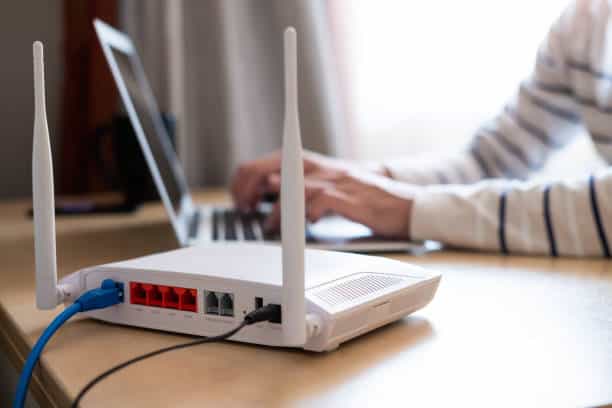WELCOME TO
THE ATLANTIC CURRENT
Welcome to The Atlantic Current – your go-to source for smart AV tips, behind-the-scenes insight, industry news, and inspiration. Whether you're planning your next project or just curious about the latest in AV tech, we’ve got you covered.
Stay in the know — sign up for our newsletter and catch the Current as it flows!

The Hidden Costs of Outdated Equipment
In today’s hyper-connected world, your home network is more than just a convenience; it’s the backbone of your digital life. With the average U.S. household now containing over 20 internet-connected devices, as we highlighted in our first article, your network’s performance is more critical than ever. However, if you’re still relying on outdated networking equipment—especially an aging router—you might be unknowingly throttling your internet speeds and limiting your home’s full technological potential.
The Bottleneck Effect
You might think that investing in a high-speed internet plan is enough. Still, outdated routers and switches can create significant bottlenecks, preventing you from accessing the full bandwidth your ISP provides. Essentially, you could be paying for more speed than you’re actually getting.
Signs Your Router is Past its Prime
Age: Industry experts recommend replacing your router every 3-5 years. If you can’t recall the last time you upgraded, it’s likely time for a new one.
Slow speeds: Not getting the speeds you’re paying for, even on a wired Ethernet connection? Your router could be the weak link.
Frequent disconnections: If areas that once had solid coverage now drop connections frequently, your router might be on its last legs.
Lack of features: Older routers may lack crucial security protocols and support for the latest Wi-Fi standards, leaving your network vulnerable.
Outdated Wi-Fi Standards
Older routers typically operate on outdated Wi-Fi standards like 802.11n (Wi-Fi 4) or earlier. Meanwhile, modern devices support newer standards like Wi-Fi 6 (802.11ax), which deliver:
- Faster speeds
- Superior performance in crowded networks
- Improved battery life for connected devices
By clinging to outdated equipment, you’re not just missing out on these advancements but also slowing down your entire network.
Security Vulnerabilities
Outdated networking equipment often lacks the latest security features and doesn’t receive firmware updates, exposing your network to cyber threats. Newer routers come equipped with advanced security protocols and receive regular updates to guard against emerging risks.
Interference and Range Issues
Older routers may lack advanced features like beamforming or MU-MIMO, which help improve signal strength and manage multiple connections efficiently. This can result in dead zones within your home and inconsistent performance across devices.
Benefits of Upgrading
Improved performance: Newer routers support the latest Wi-Fi standards, delivering faster speeds and better handling of multiple devices.
Future-proofing: Investing in up-to-date equipment guarantees compatibility with new devices and emerging technologies.
Don’t let outdated equipment be the weakest link in your digital ecosystem. Upgrading your home network infrastructure can unlock the full potential of your internet connection, enhance your smart home’s functionality, and prepare you for whatever the future of home technology brings.
Enhanced security: Modern routers offer advanced security features and frequent firmware updates, shielding your network from new threats.
Better coverage: Many new routers offer mesh networking capabilities, ensuring seamless coverage throughout your home.
Don’t let outdated equipment be the weakest link in your digital ecosystem. Upgrading your home network infrastructure can unlock the full potential of your internet connection, enhance your smart home’s functionality, and prepare you for whatever the future of home technology brings.
Related Articles
Celebrating The Arts In Style: Atlantic AV Sponsors Opera Maine’s Gala Night
Coastal Calm, Connected Living: Smart Tech For Maine Summer Homes
Building Bonds in Cancun: Strengthening The Future on AV
Staying Ahead: Educating Our Trade Partners on Evolving Home Technology
Leading The Charge in Security: Atlantic AV at ISC West
Most Read Articles
Most Recent Articles
Why Your Home Network Matters More Than Ever
Behind the Scenes: Where the Work Gets Done Before the Work Begins
Atlantic AV Named Maine’s Only Authorized Linn Turntable Dealer
Celebrating The Arts In Style: Atlantic AV Sponsors Opera Maine’s Gala Night
Coastal Calm, Connected Living: Smart Tech For Maine Summer Homes
